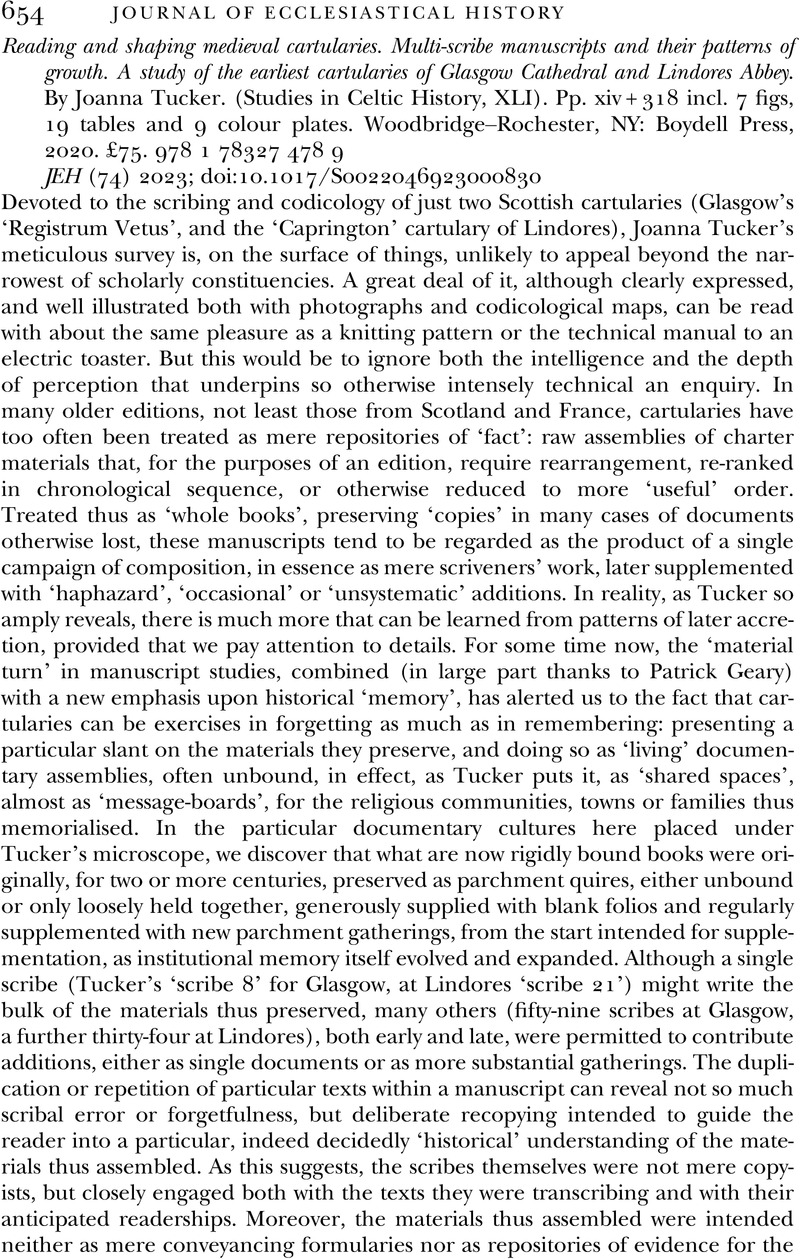No CrossRef data available.
Article contents
Reading and shaping medieval cartularies. Multi-scribe manuscripts and their patterns of growth. A study of the earliest cartularies of Glasgow Cathedral and Lindores Abbey. By Joanna Tucker. (Studies in Celtic History, XLI). Pp. xiv + 318 incl. 7 figs, 19 tables and 9 colour plates. Woodbridge–Rochester, NY: Boydell Press, 2020. £75. 978 1 78327 478 9
Review products
Reading and shaping medieval cartularies. Multi-scribe manuscripts and their patterns of growth. A study of the earliest cartularies of Glasgow Cathedral and Lindores Abbey. By Joanna Tucker. (Studies in Celtic History, XLI). Pp. xiv + 318 incl. 7 figs, 19 tables and 9 colour plates. Woodbridge–Rochester, NY: Boydell Press, 2020. £75. 978 1 78327 478 9
Published online by Cambridge University Press: 05 July 2023
Abstract
An abstract is not available for this content so a preview has been provided. Please use the Get access link above for information on how to access this content.

- Type
- Reviews
- Information
- Copyright
- Copyright © Cambridge University Press 2023



